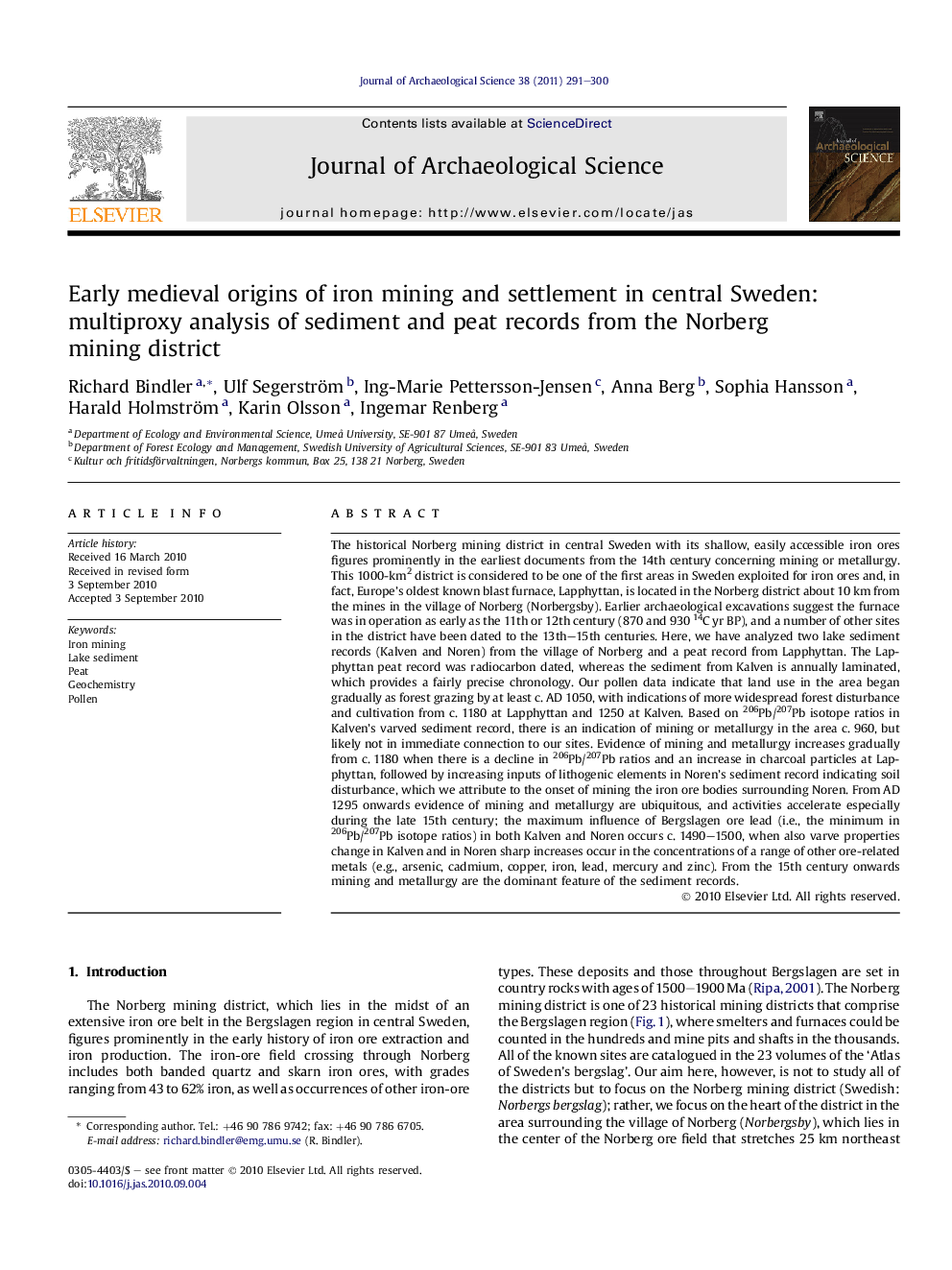| کد مقاله | کد نشریه | سال انتشار | مقاله انگلیسی | نسخه تمام متن |
|---|---|---|---|---|
| 1036205 | 943879 | 2011 | 10 صفحه PDF | دانلود رایگان |

The historical Norberg mining district in central Sweden with its shallow, easily accessible iron ores figures prominently in the earliest documents from the 14th century concerning mining or metallurgy. This 1000-km2 district is considered to be one of the first areas in Sweden exploited for iron ores and, in fact, Europe’s oldest known blast furnace, Lapphyttan, is located in the Norberg district about 10 km from the mines in the village of Norberg (Norbergsby). Earlier archaeological excavations suggest the furnace was in operation as early as the 11th or 12th century (870 and 930 14C yr BP), and a number of other sites in the district have been dated to the 13th–15th centuries. Here, we have analyzed two lake sediment records (Kalven and Noren) from the village of Norberg and a peat record from Lapphyttan. The Lapphyttan peat record was radiocarbon dated, whereas the sediment from Kalven is annually laminated, which provides a fairly precise chronology. Our pollen data indicate that land use in the area began gradually as forest grazing by at least c. AD 1050, with indications of more widespread forest disturbance and cultivation from c. 1180 at Lapphyttan and 1250 at Kalven. Based on 206Pb/207Pb isotope ratios in Kalven’s varved sediment record, there is an indication of mining or metallurgy in the area c. 960, but likely not in immediate connection to our sites. Evidence of mining and metallurgy increases gradually from c. 1180 when there is a decline in 206Pb/207Pb ratios and an increase in charcoal particles at Lapphyttan, followed by increasing inputs of lithogenic elements in Noren’s sediment record indicating soil disturbance, which we attribute to the onset of mining the iron ore bodies surrounding Noren. From AD 1295 onwards evidence of mining and metallurgy are ubiquitous, and activities accelerate especially during the late 15th century; the maximum influence of Bergslagen ore lead (i.e., the minimum in 206Pb/207Pb isotope ratios) in both Kalven and Noren occurs c. 1490–1500, when also varve properties change in Kalven and in Noren sharp increases occur in the concentrations of a range of other ore-related metals (e.g., arsenic, cadmium, copper, iron, lead, mercury and zinc). From the 15th century onwards mining and metallurgy are the dominant feature of the sediment records.
Journal: Journal of Archaeological Science - Volume 38, Issue 2, February 2011, Pages 291–300